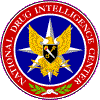
|
National
Drug Intelligence Center New York/New Jersey High Intensity Drug Trafficking Area Drug Market Analysis June 2007 Drug-Related CrimeMost of the drug-related crime and violence that occurs in the HIDTA region is committed by street gangs that dominate the retail-level distribution of drugs in many areas of the HIDTA. Some of these gangs also are trading illicit drugs for firearms. Most violence is directed at other gangs over matters of turf and distribution areas or occurs within gangs about matters such as theft or jealousy over promotions. The majority of the street gangs operating in the area are loosely knit groups organized chiefly to distribute illicit drugs; however, highly structured, nationally affiliated street gangs such as Latin Kings, MS 13, and Bloods operate in the HIDTA region as well. Most street gangs in the area are violent, operate in a defined area or turf, and are ethnically homogeneous, reflecting the ethnic population in their area of operation. Gang-related crime is increasing in the New York City metropolitan area. According to New York Police Department (NYPD) arrest statistics, gang-related17 incidents increased 47.3 percent from 2005 through 2006, and gang-motivated18 incidents increased 44.4 percent. Further, gangs in the HIDTA region are attracting younger members and absorbing smaller gangs. Latin Kings in New York City has recently been recruiting from the city's youth, forming new chapters, and increasing its presence in the New York City drug trade. Latin Kings in northern New Jersey has also increased its activity. Bloods is increasing its presence in the drug trade in Newark, taking over smaller gang sets, consolidating its power, spreading into suburban areas, and engaging in violent clashes with other gangs. In 2006 Regional Fugitive Task Force19 (see Appendix A) gang-affiliated arrests increased to 430, up from 246 in 2005. Nassau and Suffolk Counties on Long Island have experienced an increase in gang activity and associated violence over the past several years. Gang cliques in Nassau County are located primarily in the towns of Freeport, Hempstead, New Cassel, Roosevelt, and Westbury, while gang cliques in Suffolk County are located primarily in Brentwood, Copiague, Farmingdale, Huntington, and Islip. MS 13 is the most violent and fastest-growing gang on Long Island; violent incidents involving this gang are on the rise. However, as a result of aggressive law enforcement operations on Long Island, some gangs are moving to communities in Westchester County, such as Mount Kisco and Bedford. Gang activity in the upstate areas of the HIDTA is increasing as well, partially because of gang expansion from New York City. A growing trend among New York City gangs is to move drug operations upstate where they can realize higher profit margins from drug sales with less law enforcement scrutiny. For instance, the expansion of Bloods into areas of Upstate New York may be related to increased trafficking of Canadian hydroponic marijuana. Gang members in western New York routinely cross the U.S.-Canada border to purchase hydroponic marijuana and are involved in numerous crimes on the Canadian side of the border. Gang expansion has also caused an increase in violent crime in the upstate HIDTA counties. Much of this violence occurs between gangs as members steal from each other and retaliate with violence. Buffalo, in particular, posted a high number (73) of homicides in 2006, many of which were gang-related.
AbuseNearly all illicit drugs are abused to some extent in the HIDTA region; heroin, cocaine, and marijuana are abused at particularly high levels. Heroin-related treatment admissions in the region exceed those of any other drug. Heroin has attracted a new and younger consumer base, and abuse has spread from lower-income areas to some middle- and upper-income neighborhoods in New York City. The vast majority of heroin available in the HIDTA region is South American. Heroin purity has decreased significantly over the past few years;20 however, purity remains at levels that enable abusers to snort the drug rather than inject it. Additionally, in 2006 there were approximately 57 fentanyl-related overdose deaths in the New York HIDTA counties; some of these were caused by heroin/fentanyl combinations.21 Cocaine is abused at particularly high levels in the New York counties of the HIDTA, and the drug is readily available in all major population centers in the state. Cocaine abuse has increased, notably among nightclub patrons in western New York. Abuse of marijuana, particularly high-potency Canadian marijuana, is high and increasing in the upstate counties of the HIDTA. Abuse is most common among young people and college students in these areas. Crystal methamphetamine abuse is popular among nightclub patrons in New York City. Law enforcement and public health officials are monitoring this situation because this group of individuals has long been on the cutting edge of drug trends that later spread to the general population. Law enforcement and public health authorities also are monitoring PCP (phencyclidine) abuse in Hudson and Essex Counties because of 20 PCP-related deaths that occurred in the areas during 2006; these areas generally do not report PCP-related deaths. End Notes17. The New York Police Department (NYPD) defines a
gang-related incident as any incident of unlawful conduct by a gang member or
suspected gang member. |